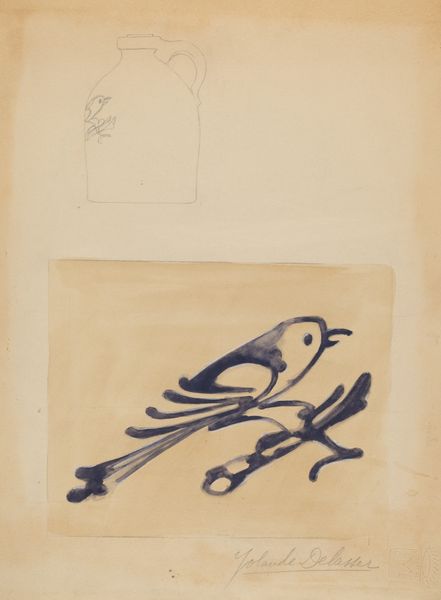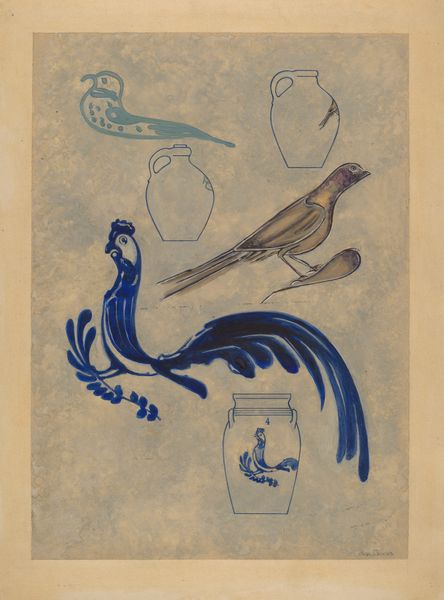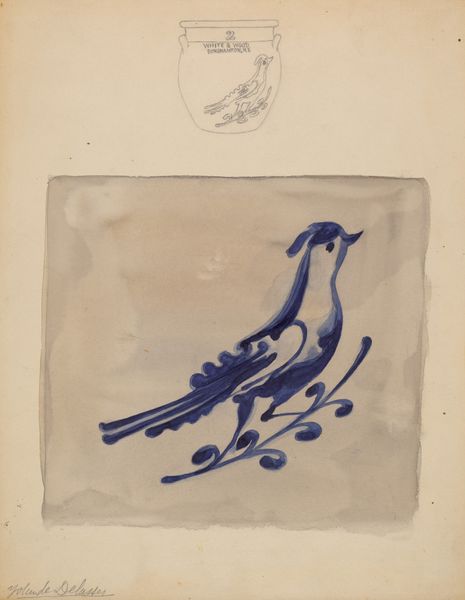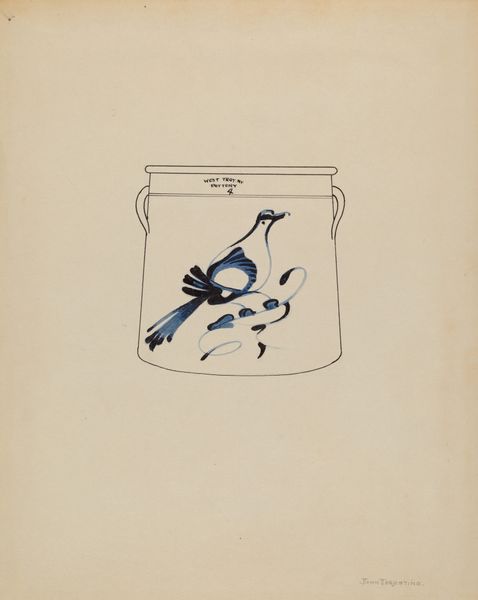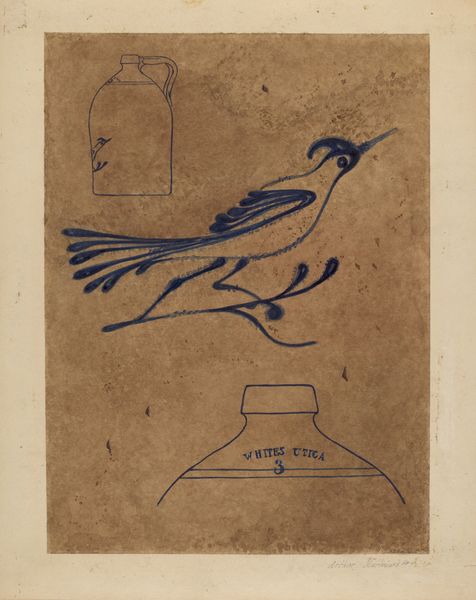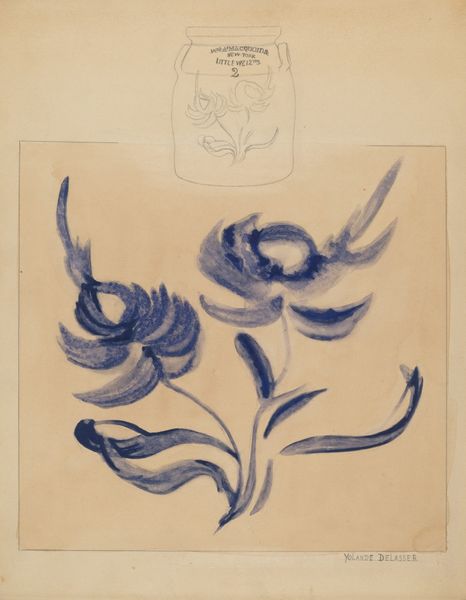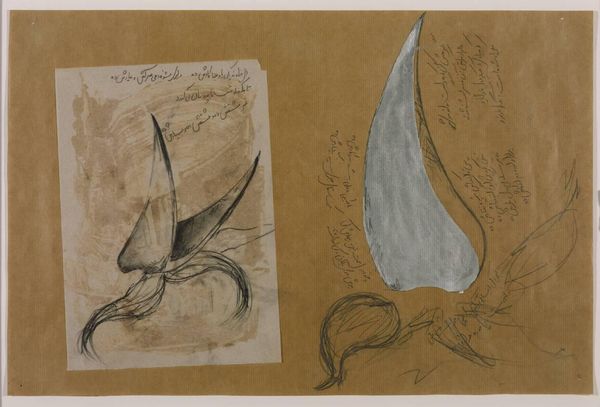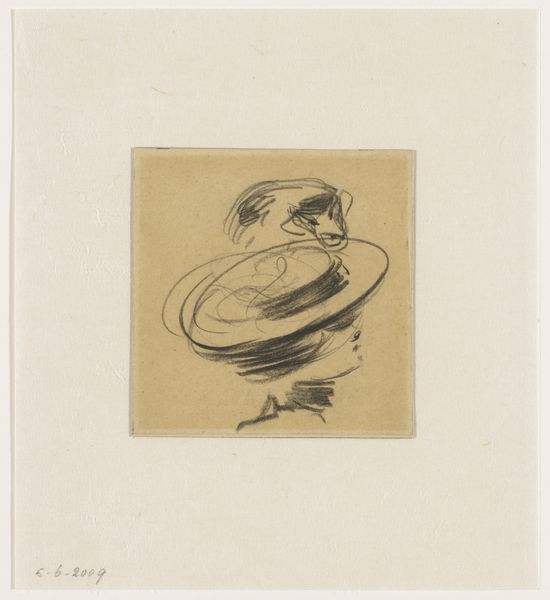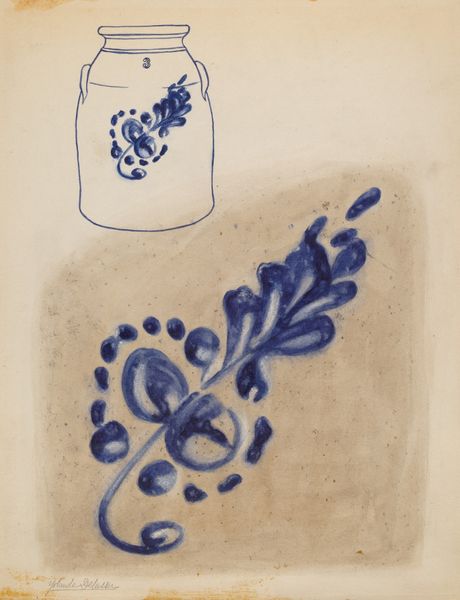
drawing, ink
#
drawing
#
blue ink drawing
#
figuration
#
ink
Dimensions: overall: 28.8 x 22.8 cm (11 5/16 x 9 in.) Original IAD Object: 8 3/4" High 10" Dia.(top) 9 1/4" Dia.(base)
Copyright: National Gallery of Art: CC0 1.0
Curator: Yolande Delasser's ink drawing, titled "Crock," created around 1938, immediately strikes me. It seems so raw, so unburdened by expectations of finish or perfection. The medium itself, ink, allows for this kind of immediacy. What's your take? Editor: It feels deceptively simple at first glance, yet there's a curious dissonance. The directness of the blue ink drawing contrasts sharply with the odd composition: two bird depictions, one "free," the other confined. I see questions of freedom, representation, and the gaze emerging, even within this unassuming form. Curator: Exactly! Consider the production of the ink itself—likely a manufactured good, commodified, perhaps even reflecting trade routes and colonial power dynamics, yet deployed here to depict nature. There's an inherent tension in Delasser’s artistic choices. Editor: Right. And to me, the crock itself acts as a metaphorical lens, suggesting observation, even entrapment. The upper image is of a bird *inside* a container, which mirrors so many discussions around women being "contained" and silenced. It suggests, for me, an analogy to female artistic expression at that time. Curator: And the gestural quality is vital. Delasser isn't aiming for photorealism. Instead, she emphasizes the action of drawing, the physical engagement with the materials, which is the essence of production. Think about her hand movements, the decisions made in that instant. Editor: Absolutely. Furthermore, who was Delasser addressing through this drawing? Was this meant for a salon? Or for personal reflection, engaging themes like ecology, the changing role of women, and the inherent societal restraints and constraints they lived within? We cannot disentangle artwork from its political or social era. Curator: In that respect, Delasser pushes against artifice. It is, in and of itself, authentic, showcasing how simple materials could bypass strict traditional art, especially because Delasser focuses more on raw technique and less on aesthetics. Editor: Agreed. Delasser's piece provokes contemplation. Through its imagery and choice of simple means, this drawing prompts the observer to see a connection between confinement, production, art, and our freedom of perspective. Curator: Ultimately, Delasser offers us a compelling invitation to re-evaluate conventional approaches and assumptions to how art functions by means of simple design.
Comments
No comments
Be the first to comment and join the conversation on the ultimate creative platform.
